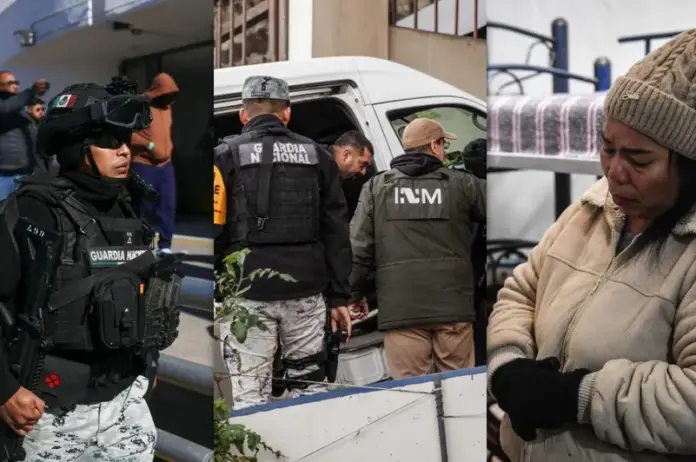Since Donald Trump took office as President of the United States on January 20, his government’s immigration policy has led to the deportation of thousands of Mexicans.
Among the states affected are Michoacán, Oaxaca and Veracruz, from where more than a thousand compatriots were repatriated to national territory since the arrival of the new US president.
The National Institute of Migration (INM) reported that between January 20 and February 5, more than 8,000 Mexicans were repatriated. Francisco Garduño, head of the INM, declared in a conference from Reynosa, Tamaulipas, that the reception centers for deported migrants began to be prepared two months ago, with the purpose of providing humanitarian attention to those who return.
“When they have arrived, I have seen how they bow down and kiss the Mexican soil, they kiss the land of their country. And on other occasions they jump for joy, raising their arms,” said Garduño.
The Secretary of the Interior, Rosa Icela Rodríguez, assured that there is a review protocol in coordination with the United States to identify whether the repatriated have criminal records.
However, she emphasized that “99.9999 percent are hard-working Mexicans who represent a pride for our country” and asked not to criminalize migrants.
What is the situation in Oaxaca?
In Oaxaca, 561 people were deported in the last 15 days. According to the state government secretary, Jesús Romero, only seven returned to their communities of origin, while 65 percent decided to stay in border cities such as Tijuana, San Quintín, Mexicali, Nogales and Matamoros.
Many chose to look for work in agriculture.
The unaccompanied minors were transferred by the DIF to their communities in order to reunite them with their families.
Romero said that so far there are no cases of Oaxacans deported to Guatemala or Guantanamo, and that the treatment of those repatriated has been one of respect for human rights.
What is the situation in Michoacán?
In Michoacán, 431 compatriots have been deported since Trump’s arrival, reported Felipe Morales Callejas, state delegate of the INM.
Although there were no mass deportations, the state Migrant Secretariat implemented a care protocol in coordination with federal and state authorities.
Among the measures, shelters were set up at the Morelia International Airport and in facilities such as Civil Protection, Cecufid and the Caritas Pastoral Center.
Antonio Soto Sánchez, head of the Migrant Secretariat, said that support is provided to those repatriated and that they seek to guarantee respect for their human rights during their reintegration.
What is the situation in Veracruz?
In Veracruz, deportation figures are lower compared to other states. Bertoldo Reyes Campuzano, general director of Migrant Assistance, reported that fewer than 50 Veracruzans were deported in recent weeks.
However, he warned that the economic impact could be significant in municipalities such as Soledad Atzompa, where remittances represent the main source of income.
Demetrio Cruz de Jesús, mayor of the municipality, warned that if deportations increase, the local economy could collapse.
“If they deport our citizens, the economy of the municipality will decrease considerably,” he said.
Despite the low official figure, monitoring of transfer and deportation points remains active in coordination with the INM, and the state government developed a care program for repatriated migrants.
Will there be more repatriations from the United States?
While Mexican authorities have said that deportations have not reached a massive level, the trend could change in the coming months as U.S. immigration policies are strengthened.
The most affected states have begun to take measures to care for the returnees; however, the challenge lies in guaranteeing their social and economic reintegration in a country that many left behind decades ago.

Source: milenio




